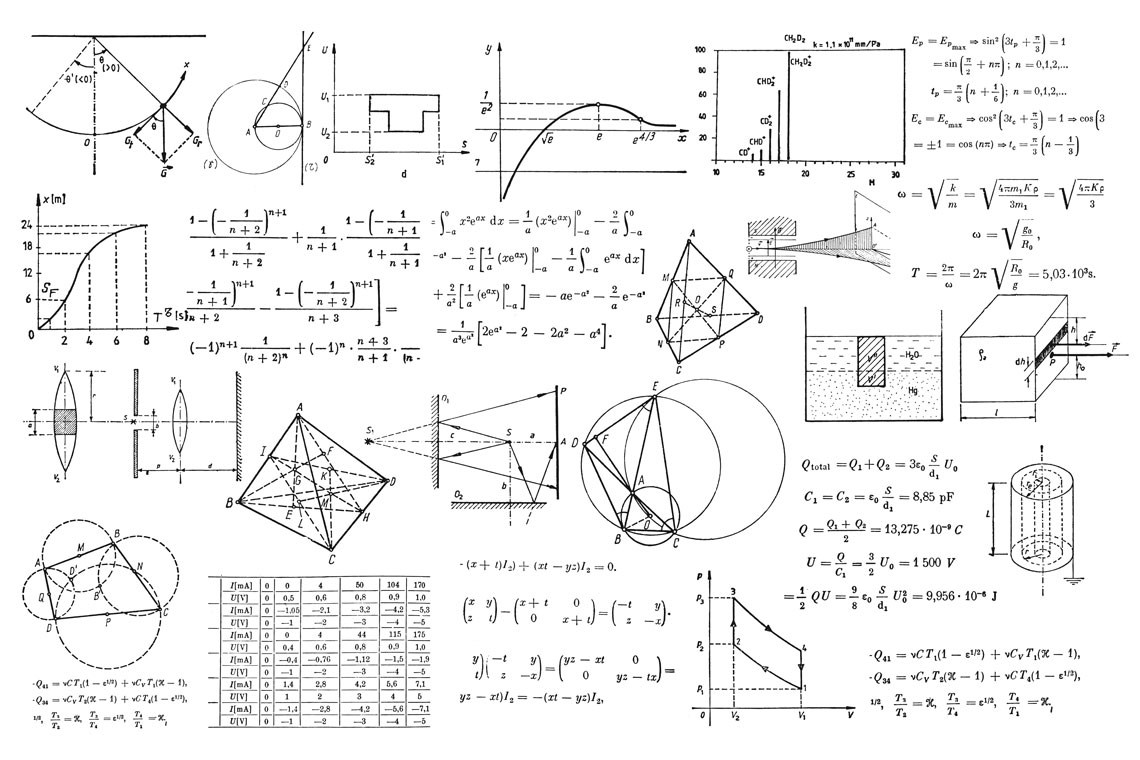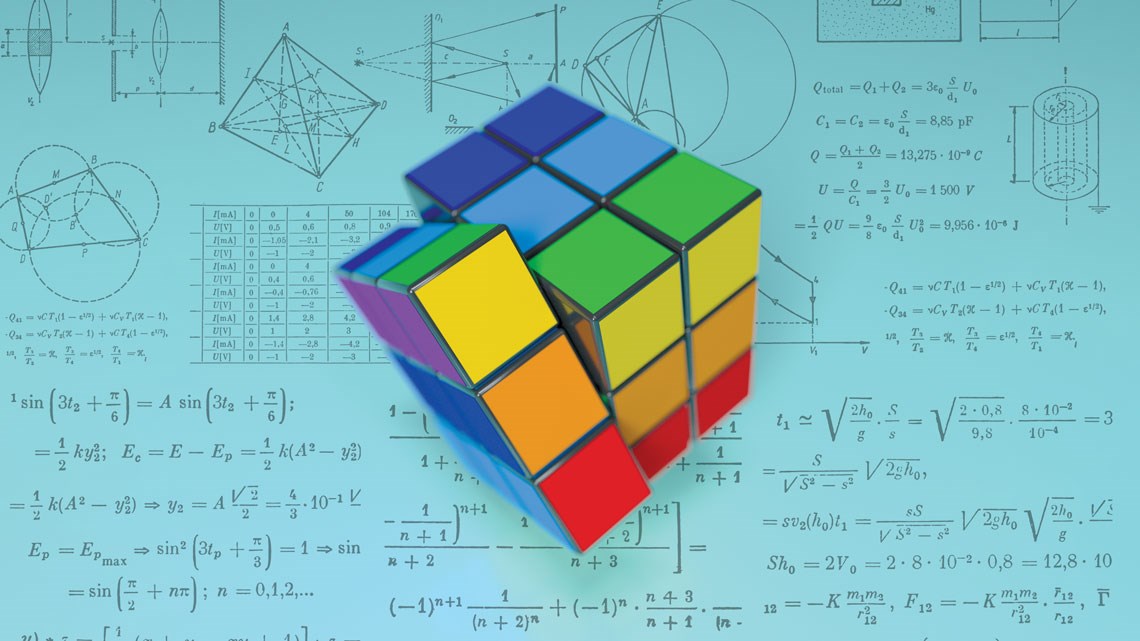The Fields Institute for Research in Mathematical Sciences, headquartered in Toronto, Canada, will hold an online event on November 18 at which five scientists and students from different countries and institutions will present works in areas such as algebra, geometry, and algorithm development. The speakers will also discuss how being gay, lesbian, bisexual, or transgender relates to their academic lives. This is the third year in a row that the institute, Canada’s most important mathematics research center, has put on the event, called LGBTQ+Math Day. The initiative is part of the institution’s strategy to make the discipline—which has been predominantly male and locked into gender stereotypes—more welcoming and appealing to all types of people.
German researcher Katrin Wehrheim from the University of California at Berkeley, in the United States, will talk about her work in a field known as symplectic geometry and her activism to expand the female presence in mathematics and promote inclusive education for LGBT+ students at Berkeley. “I will share a few stories from my struggles for truth in symplectic geometry and educating to counter oppression,” Wehrheim wrote in the summary of her presentation. Tyler Kelly, an American professor at the University of Birmingham, in the United Kingdom, will present his studies on a subject in algebraic geometry called mirror symmetry, while also discussing his activism to increase minority inclusion at institutions such as the Mathematical Society of London, in a lecture titled “Out of the Closet and Into the Mirror.” Joseph Nakao, a PhD student at the University of Delaware, USA, will share some of his research interests, such as the development of algorithms with applications for plasma physics, and will explain from his own experience how mathematics departments can support queer (a generic term for people who do not fit into traditional gender patterns) students.
The event was conceived and organized by Anthony Bonato, a professor at the Metropolitan University of Toronto, with the aim of promoting networks among LGBT+ mathematics students and researchers and increasing their visibility and acceptance. In an opinion piece published in September in the journal Nature, Bonato said that being openly gay has been essential for him to reach his full scientific potential. “When I studied for my mathematics doctorate in the late 1990s, I believed that mathematics was mathematics, and not a subject linked to my identity,” he said. “My view changed the day a professor told me that my being openly gay made others in the department uncomfortable, and that I should keep my sexuality to myself to fit in. I questioned my place in mathematics because I could no longer separate the objective world of proofs and equations from homophobia.”
In a career that spans more than two decades, Bonato has seen inclusion evolve in a positive direction. Among other milestones, his article highlights the creation in the 1990s of an association of LGBT+ mathematicians, Spectra, which today has over 310 members. Spectra promoted the formation of support networks based on 250 “allies,” professors who are committed to making the academic environment more welcoming. There is no specific data on how many LGBT+ individuals work in the discipline. According to a 2016 US study called Queer in STEM, which surveyed LGBT+ professionals in the STEM areas (science, technology, engineering, and mathematics), 57% of the 1,427 respondents reported that half or more of their work colleagues knew about their sexual orientation. This rate exceeded the average percentage recorded in the US workforce overall, estimated at around 47% according to a 2014 survey by the Human Rights Campaign Foundation.
An association of LGBT+ mathematicians—Spectra—has more than 300 members and 250 “allies,” professors committed to fostering a welcoming academic environment
In academic life, as Bonato pointed out in a text published on his personal blog, he too has felt more accepted. Although he has confronted situations of prejudice from department colleagues, he’s felt at home working at the Canadian university, which, like many other academic institutions in the United States and Europe, has created policies to welcome minorities and promote gender equality. “I have many LGBT+ colleagues and numerous allies among my heterosexual peers. Our dean tweets about inclusion and faculty members put rainbow flags on their Facebook profiles during LGBT+ Pride month,” he said.
Queer mathematicians have long participated in conferences aimed at inclusion in STEM areas, but only recently have events of this nature been held exclusively for their specific discipline. Autumn Kent, a transgender researcher at the University of Wisconsin, Madison, and Harry Bray, from George Mason University, both in the United States, organized a five-day conference held in June 2019, aimed at encouraging collaboration between LGBT+ mathematicians in the fields of geometry, topology, and dynamical systems. Support from the Fields Institute, which has a tradition of promoting diversity (albeit focused primarily on expanding the presence of women in the field), was important in gaining publicity for the inaugural event, which was held in 2020, early in the pandemic.
In Brazil, the issue of creating more space in mathematics for LGBT+ students and researchers has seen some progress recently, but with a focus on studies on gender and inclusive education. In 2020, the research group “MatematiQueer: Sexuality and Gender Studies in Mathematics” was registered with the National Council for Scientific and Technological Development (CNPq). Based at the Institute of Mathematics of the Federal University of Rio de Janeiro (IM-UFRJ), the group includes more than 80 professors and students working on lines of investigation that connect mathematics education with human rights, sexual minorities, and gender relations. “This is a new field of research,” says the group’s leader, Agnaldo da Conceição Esquincalha, a professor in the IM-UFRJ Postgraduate Program in Mathematics Education at the university. “We, too, have a social commitment, which is to show LGBT+ people that the exact sciences are for them as much as anyone else.”
One of the MatematiQueer group’s concerns is analyzing why there has been an increase in the attitude which posits mathematics as a place of neutrality where math content cannot be mixed with historical, cultural, social, or political issues. “In teaching, this neutrality does not exist,” says Esquincalha. The idea of neutral territory, he observes, makes it difficult for professors in the field to deal with their student’s day-to-day problems, which they bring into the classroom with them and can even lead LGBT+ students to distance themselves from the discipline by perceiving it as being opposed to their sexual orientation. Mathematics professor Tadeu Silveira Waise, who completed his master’s degree in 2021 through MatematiQueer, says he became interested in this line of investigation when he realized that several of his private math students were LGBT+ like him and felt freer bringing up questions and anxieties with him that did not emerge within the school environment. “Schools don’t usually deal with these issues,” he says.
 Dan Cristian Padure
Dan Cristian Padure
One of the research group’s first initiatives was to conduct a survey among mathematics degree students in Rio de Janeiro to assess their views regarding approaches to subjects such as sexual and gender diversity in basic education classes and what kinds of discussions they had encountered along these lines during their training. About 5,000 questionnaires were sent and 710 people responded. Many of the responses were offensive. “There were people calling us crazy, saying that we should study Isaac Newton or lamenting the fact that the professors were no longer priests, as in the religious schools of old,” says Waise, who analyzed the results of the survey as part of his master’s thesis, defended in 2021.
There were 264 responses in favor of broaching the subject of sexual and gender diversity within mathematics classes, but 50 said they did not know how this would be done. Fifty-one respondents suggested approaching gender issues through statistical data, for example, exploring the reading of graphs in the classroom, while 56 thought that this could be done in conversation circles, lectures, and dialogues on respect and prejudice. Thirteen survey respondents suggested the use of interdisciplinary projects and six an approach employing the study of historical figures in mathematics who were also members of minorities.
Esquincalha believes social markers influence learning. “If a teacher is a white man, the relationship between the students and the math class plays out in a certain way. If he’s Black, it’s another. If he’s white and gay, the dynamic is also different,” he says. This goes for students also. He observes that mathematical knowledge is often used as a reference to define who is smart and who isn’t. “This generates exclusion, propagating the false idea that girls aren’t good at math and, consequently, shouldn’t follow scientific and technological careers,” he explains. One inverse effect is that, for minority groups or marginalized individuals, mathematical aptitude can eventually become a tool of power. “I speak from personal experience. I was bullied at school when I was a child and taunted with insults related to my sexuality. When they realized that I was good at math, the same classmates who had been calling me names approached me wanting to be my friend. And when other people made fun of me, they stood up for me. I’ve noticed that my relationship with mathematics has an impact on other social relationships.” This perception, he observes, isn’t limited to his personal experience, but has also been observed in the master’s research of mathematics professor Hygor Batista Guse, defended this year under Esquincalha’s guidance.
Erikah Pinto Souza, a trans math teacher working in the municipal education system of two cities, Maranguape and Itaitinga, in the Fortaleza region of Ceará State, also recently joined the MatematiQueer research group. Souza finished her master’s degree this year at the Federal Rural University of the Semi-Arid Region (UFERSA) with an ethnographic study conducted with three other transgender teachers from public schools in Ceará. Her doctoral project with MatematiQueer will study pedagogical and creative practices that counter the idea of the neutrality of mathematics. She herself employed these kinds of strategies during her eight years as an elementary school teacher and while working in teacher training in Ceará. “I used a dossier on murders of trans people or data from the transphobia call-in tip line to conduct statistical analysis. Using those kinds of numbers, I covered concepts that needed to be addressed by math students, such as arithmetic averages and creating and interpreting graphs,” she explains.
According to the teacher, such strategies were always backed by official pedagogical documents that recommended relating social problems and the students’ lives with the theoretical content. She claims that she never had problems with the students nor was she disrespected by them. “The students took the content in stride, since it was related to their real lives at the school. At one school where I was principal, I had two transgender students, aged 11 and 12,” she says. But she faced prejudice from colleagues when she taught mathematics teacher-training classes. “There were those who did not accept having a transgender person as a teacher-trainer,” says Erikah Souza.
Republish

